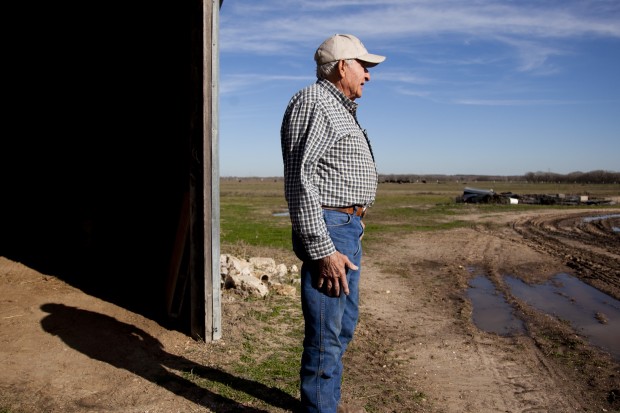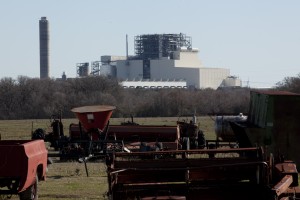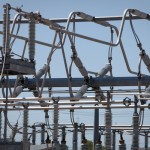Mystery Behind Sandy Creek Power Plant Begins to Unravel

Photo by Jeff Heimsath/StateImpact Texas
Robert Cervenka, a neighbor of the troubled coal power plant, has been ranching here for over seventy years.
What happened at the Sandy Creek power plant? The new coal-powered generator, one of the few developing coal projects in the state, had a strange malfunction last fall, setting back construction on the plant a year, and pushing the Texas electric grid even further into a tight spot. The power station in Riesel was set to produce 925 megawatts of electricity for Texas, enough to power an estimated 900,000 homes.
But what exactly happened wasn’t clear. The companies behind the project wouldn’t talk. The Electric Reliability Council of Texas, which oversees the grid that serves much of the state, said they couldn’t discuss it because it would be bad for market competition. And a video taken during a test startup seemed to show something going wrong. (It has since been removed.)
On Monday, Standard and Poor’s (S&P) downgraded the credit rating of the project, and for the first time we have some answers about what went wrong at the plant. In a press release explaining their reasons for a negative outlook on the project, S&P says that an October 17, 2011 accident set back the plant’s start date by nearly a year. On that day, “a number of tubes overheated that badly damaged the broiler,” S&P says. Now the plant is expected to come online in Spring 2013.
But the financial stability of the project is still in question.
“We could lower ratings if construction issues persist or if additional costs of complying with environmental rules appear likely,” S&P says. “We would likely return the outlook to stable following successful commerical operations.”
Part of what’s hurting the plant’s prospects are low prices in the Texas electricity market. The project’s new credit rating is B+, which might sound good, but with the way credit ratings work, it’s actually considered a “speculative” investment according to S&P, as opposed to “investment grade.” S&P continues to list the project as having a “negative” outlook, meaning possible changes to its credit rating in the future are likely to be detrimental.
And if the plant doesn’t get up and running by July 2014, the groups that have signed long-term contracts with the project can terminate them.


